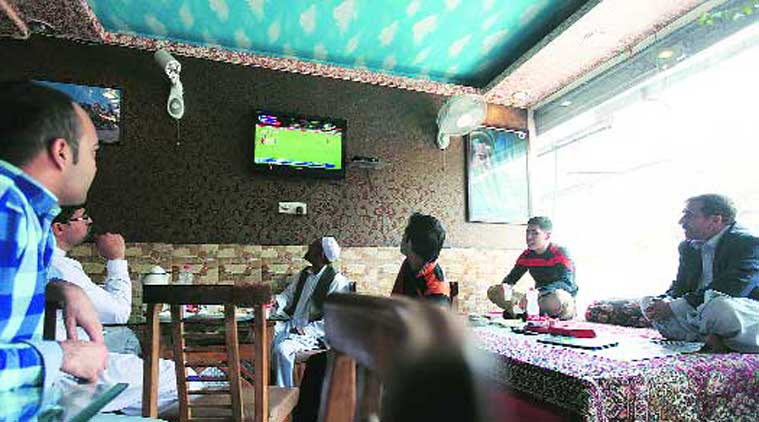How watching cricket in India has changed over the years
 It was in the 70s, when Sunil Gavaskar rose to the fame that radio commentary in India picked up pace.
It was in the 70s, when Sunil Gavaskar rose to the fame that radio commentary in India picked up pace.THE calls came every 20 minutes. At times, more often, especially if India were in action. It was the same question every time: “Score ennada?” And once he’d gotten his answer, my father would end the call with a prediction. “India will make 230”,”Australia won’t go beyond 180”, or at times, “That chinna paiyyan (little boy, alias Sachin Tendulkar) will score 50 today.” (Full Coverage| Venues | Fixtures)
By the time the 1992 World Cup came along, my father had little time for his young sons. His restaurant in central Mumbai was flourishing, and he had to be there every day of the week. But his cricket addiction never waned. He still couldn’t function without knowing the score, even while hundreds swarmed over his tiny establishment for their daily fix of dosa and vada sambar. As any six-year-old worth his salt, I preferred playing cricket in the park to sitting in front of the 14” Onida TV in the living room, collecting data for my father. But did I have a choice? Not with the “Score ennada?” lurking in the background.
As the World Cup returned Down Under after 23 years, I wonder how many six-year-olds sat in front of their flat-screen TVs without really wanting to. There are enough cricket-obsessed dads around, but in an era where the bails light up whenever the ball hits the stumps and we finally know what our umpires sound like, smartphones have replaced smart kids as sources of cricket information. There’s also live-streaming options, not to forget the array of websites offering ball-by-ball text commentary, match and individual stats. If nothing else, there are always the cricket experts, professional or otherwise, putting up opinions on Twitter.
Forget these luxuries; those of my father’s generation grew up not even knowing what their favourite cricketers looked like, forget who their favourite filmstar was. It’s a far cry from our times when the internet or the television has information about everyone, from Virat Kohli to an unknown U-19 player in Fiji.
When my father was six, independent India was a year old. Growing up on Chennai’s Wallajah Road, right across the Chepauk Stadium, had its advantages though.
Policemen would knock at his door every hour, asking for a glass of water, and in turn, let him and his brothers sneak in to watch the action. Transistors were still not in vogue or even affordable in the 1950s-early ’60s, and the only way he could know of India’s progress on their away tours was by sitting outside The Hindu office on Mount Road, waiting for an employee to update the score, once every 15 minutes on a black board.
Even though you could tune into the ABC or BBC radio frequency on and off during the ’60s, and hear the distinct voices of Alan McGillivray and John Arlott, it was only in the ’70s, as a curly-haired David (Sunil Gavasker) started felling the Goliaths from the Caribbean, that radio commentary took off in India. Soon, nearly everyone had a Remco transistor, and thanks to Narottam Puri, Lala Amarnath and Sushil Doshi, terms such as napituli and kahin na kahin entered the collective vocabulary of a nation busy transforming a sport into a mania.
By the 1980s, TV had taken over. But it was black-and-white, and unlike now, when over 40 cameras monitor every angle of the playing field, there was just one camera, placed at a 60-degree angle, and focusing in from wide mid-on. Two of India’s greatest cricketing moments from its formative years — the first Test win in England and the 1983 World Cup glory — were witnessed like this.
Despite the cable-television revolution of the early ’90s, we still depended on primetime highlights to see how a young Tendulkar had coped with the bullies from Australia and South Africa. During India’s 1992-93 tour of South Africa, my brother and I would wait for the highlights every evening, hoping that India had played themselves into a good position. Radio was still big, but television gave us a first-hand feel of how events had unfolded.
As the 20th century drew to a close, India became the base of world cricket. Jagmohan Dalmiya had taken over the reins, Indian brands were sponsoring international teams, and there were dedicated sports channels broadcasting live cricket from around the globe. We could hear Bill Lawry welcome us to the Gabba and hear of Inzamam-ul-Haque bashing up a fan in Toronto. But, unlike today, the coverage started with the umpires walking out, without any lengthy preamble.
Cellphones were not yet popular, but by the late ’90s, my father made his first technological leap: he bought a pager for score updates. In 2015, his calls between matches have stopped completely, but I can’t say the same about his predictions. After Tendulkar, he has moved on to the kovam paiyyan (the angry young man). These days, he backs Virat Kohli as a matchwinner.





